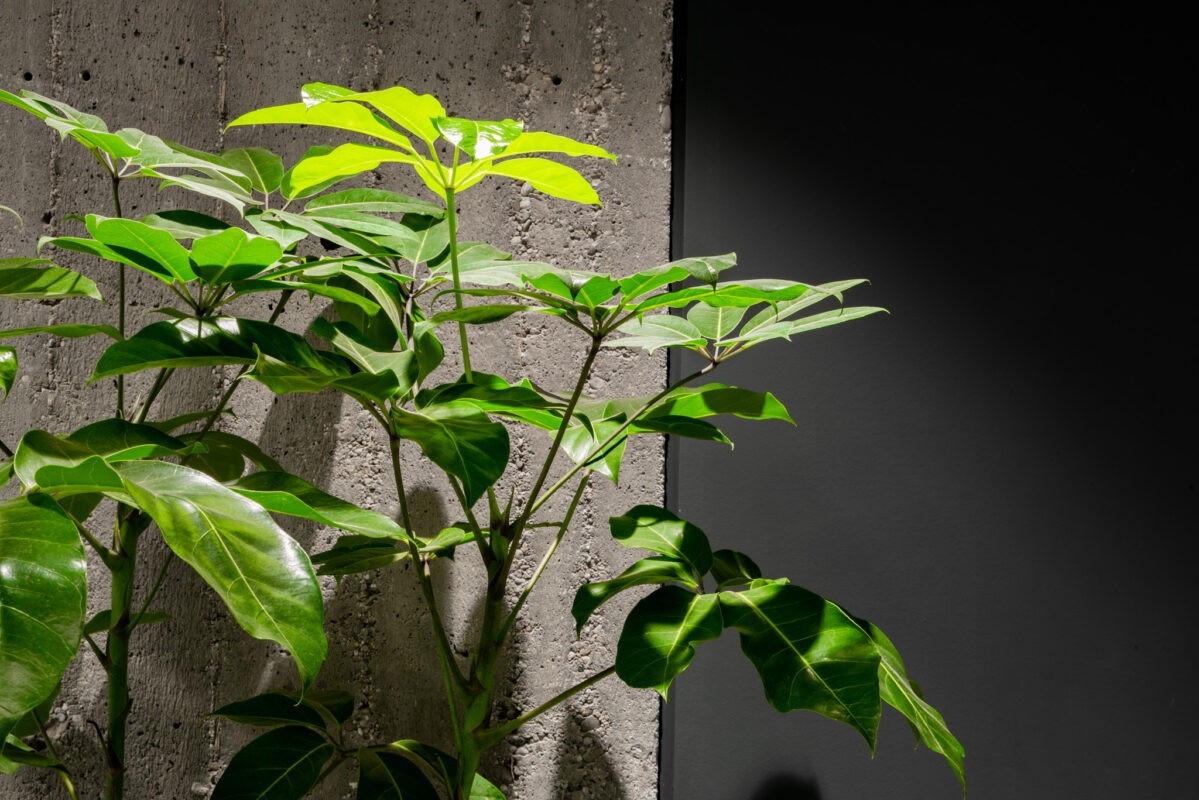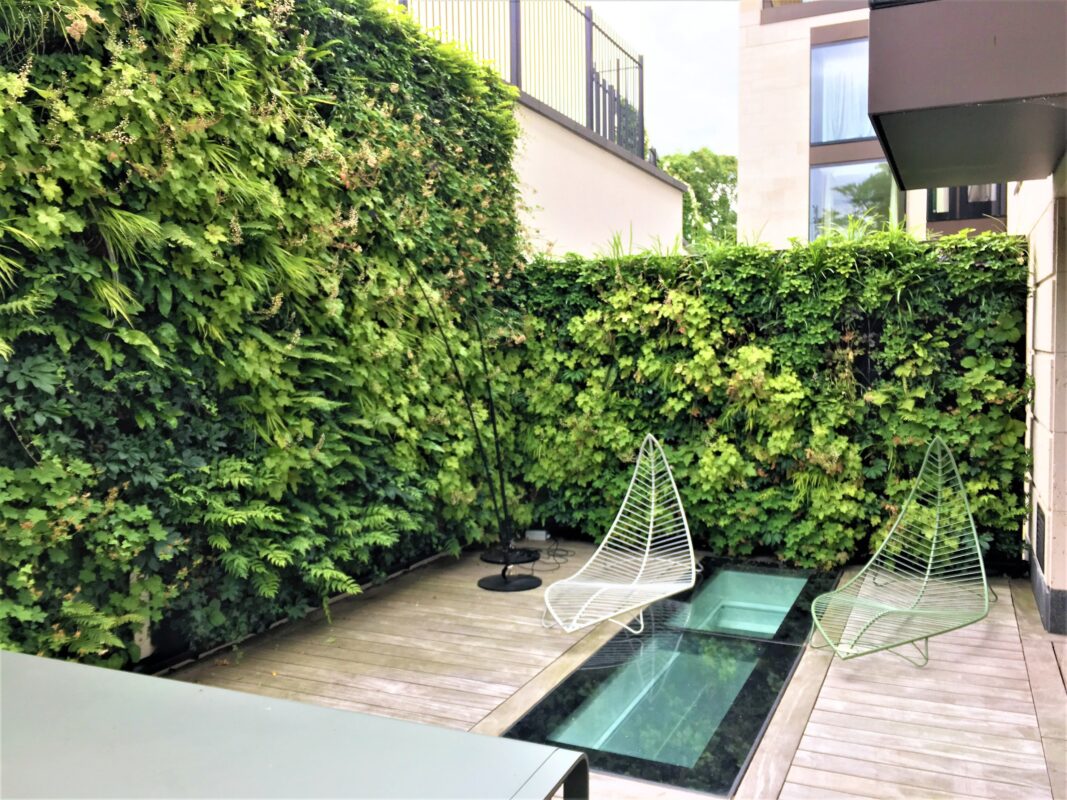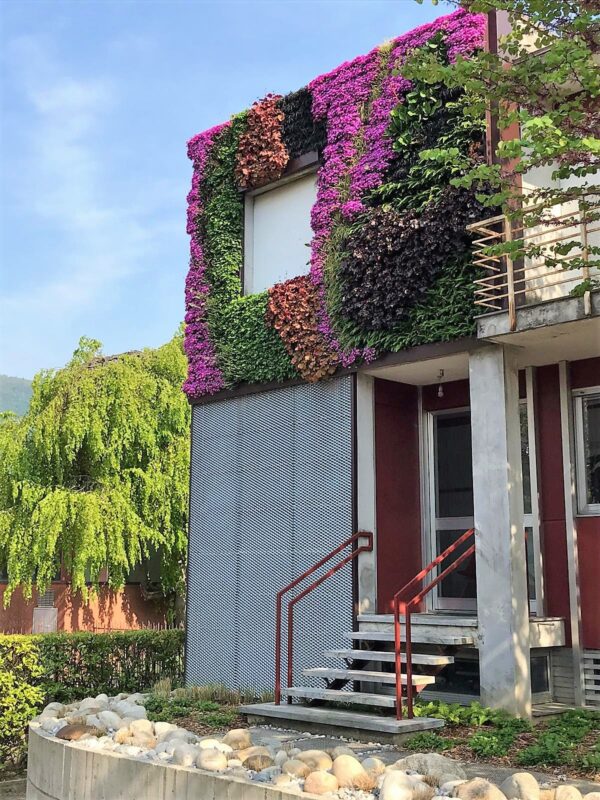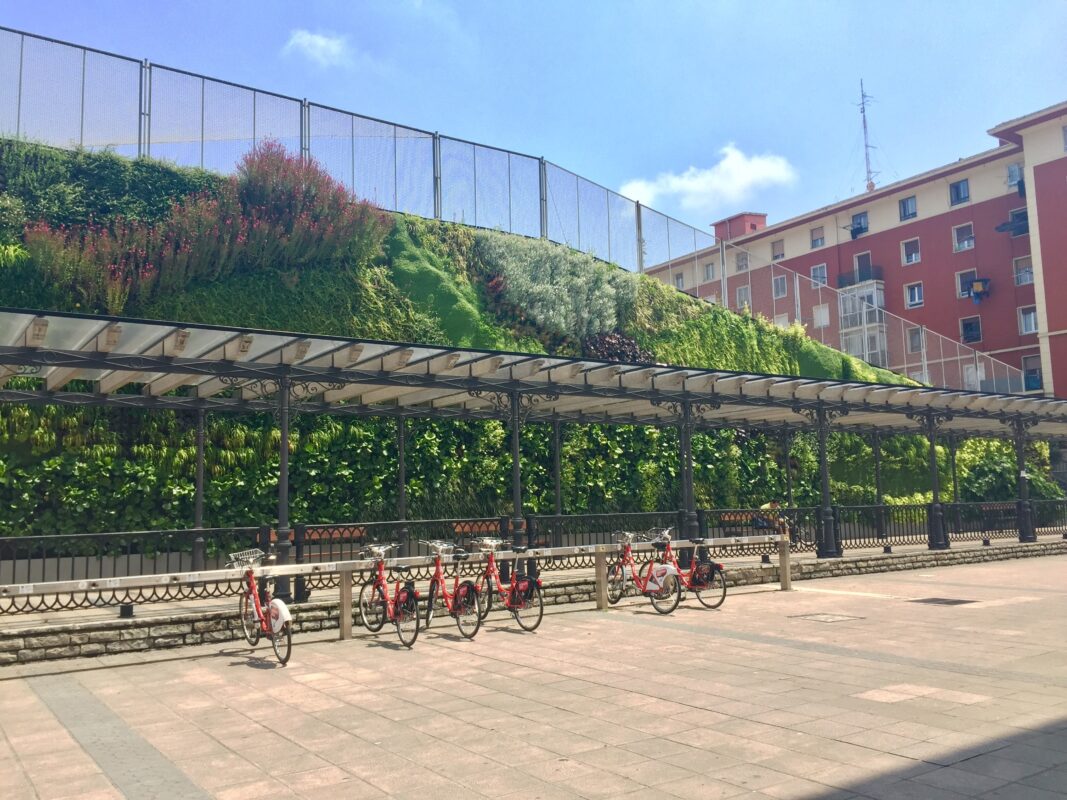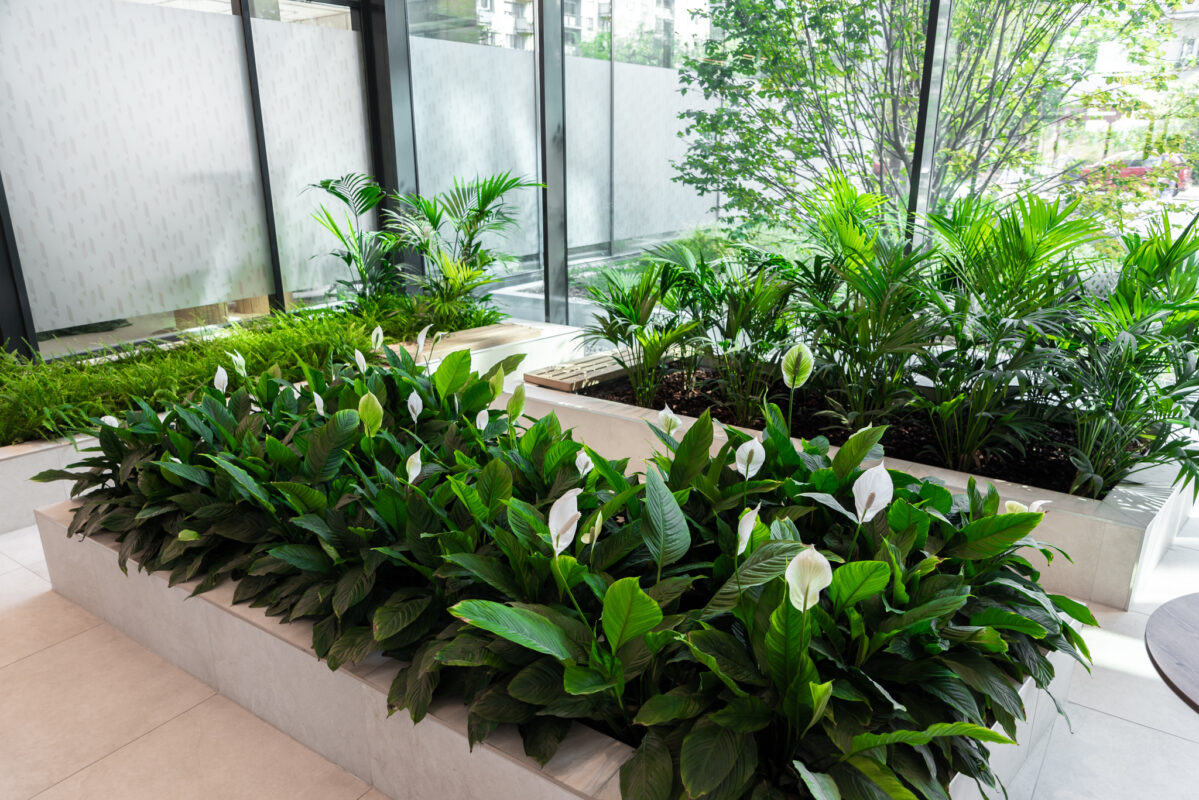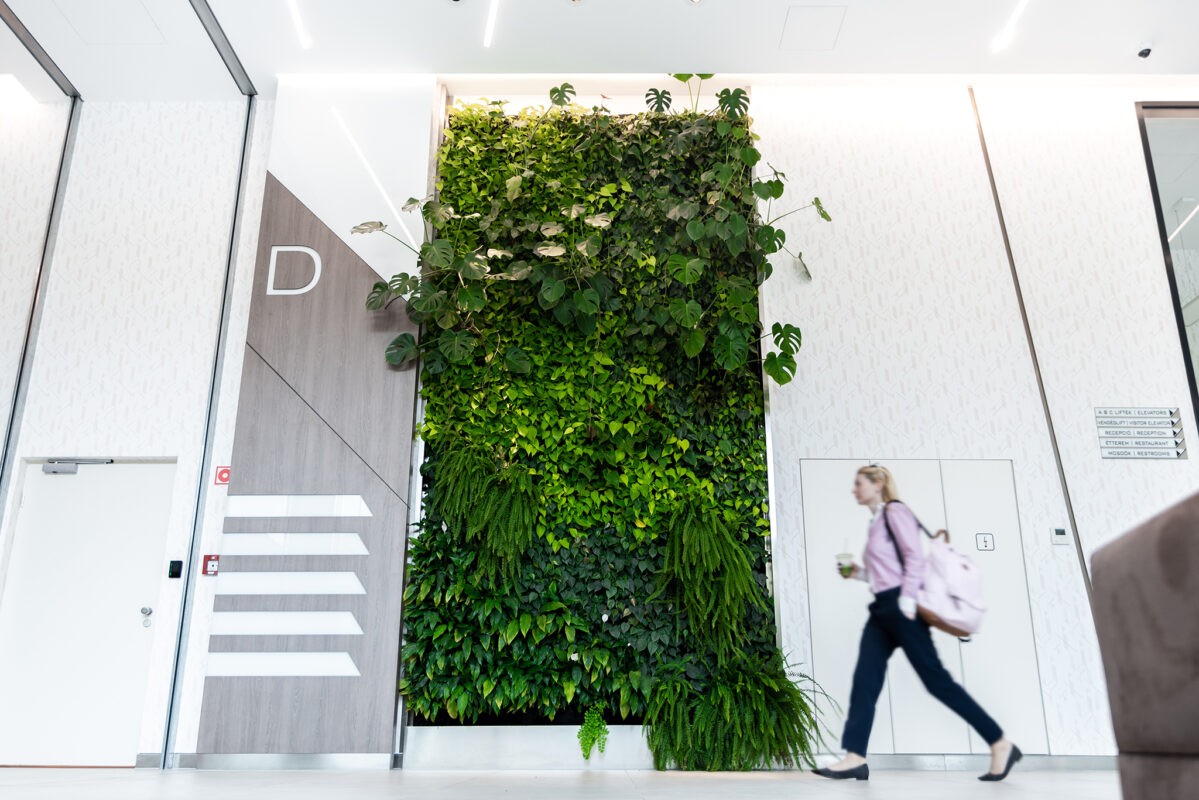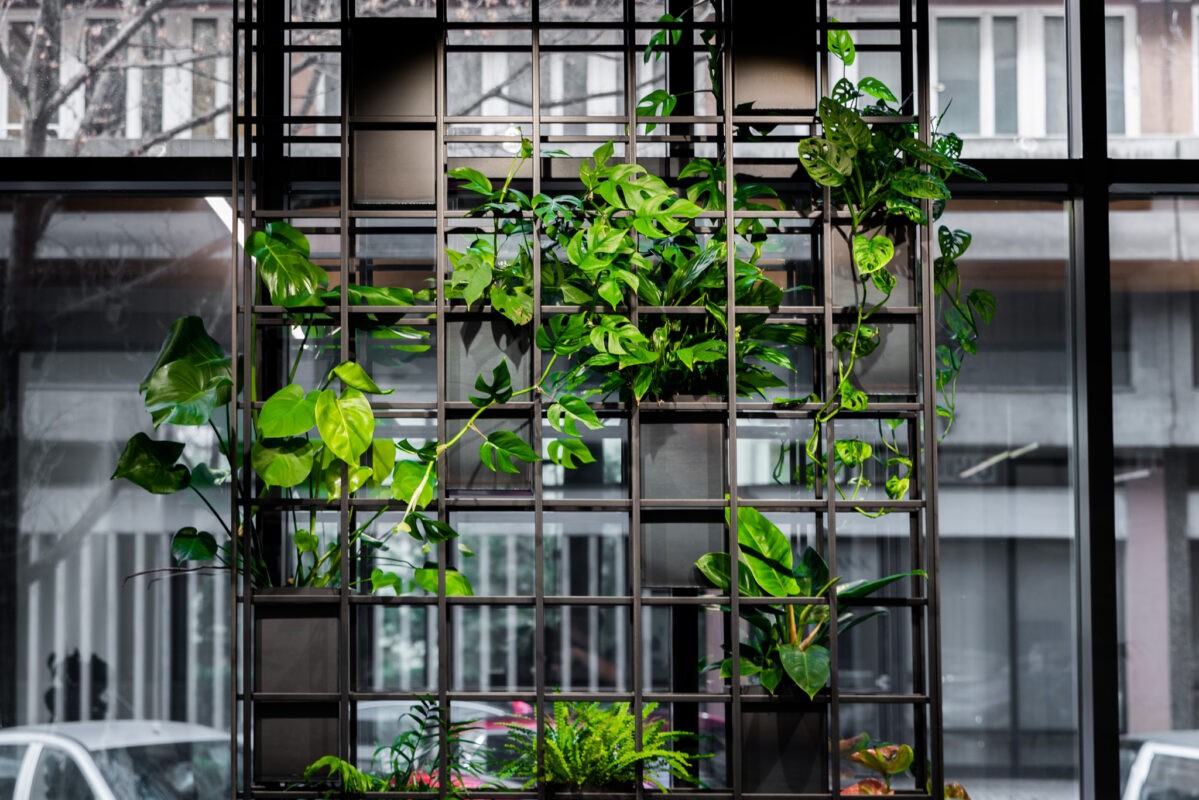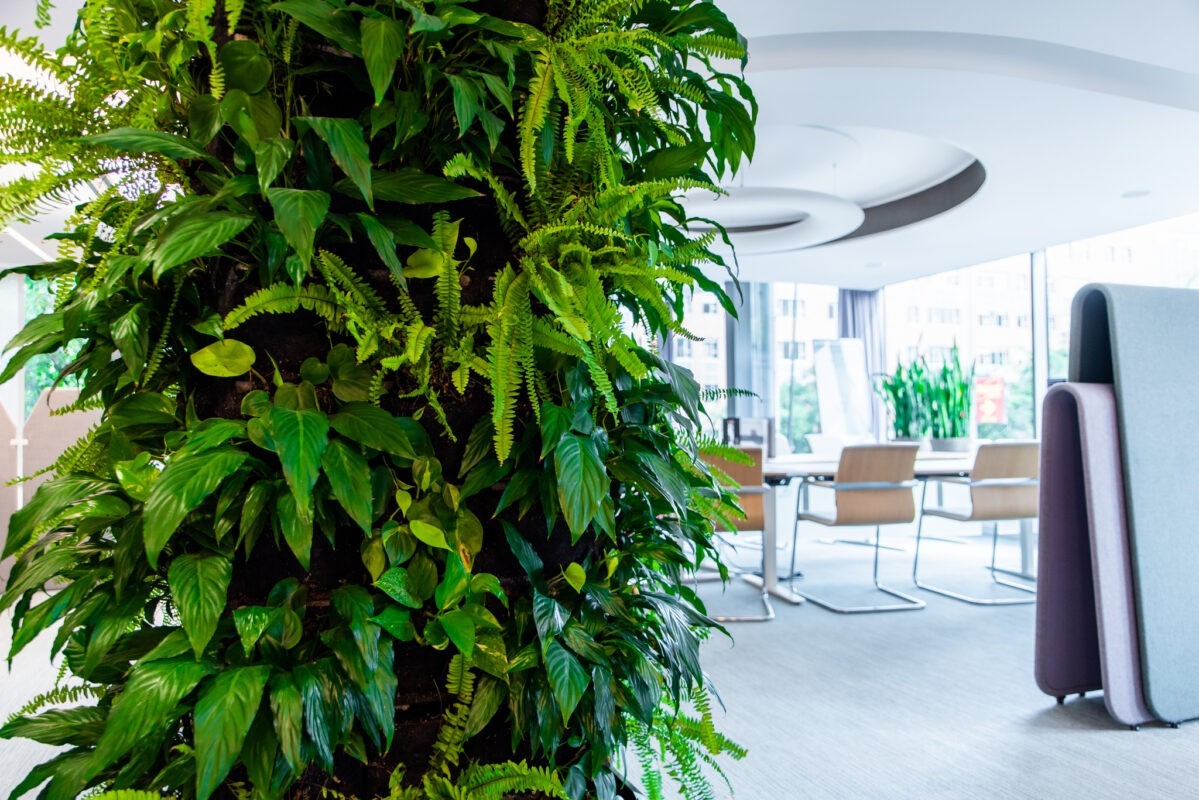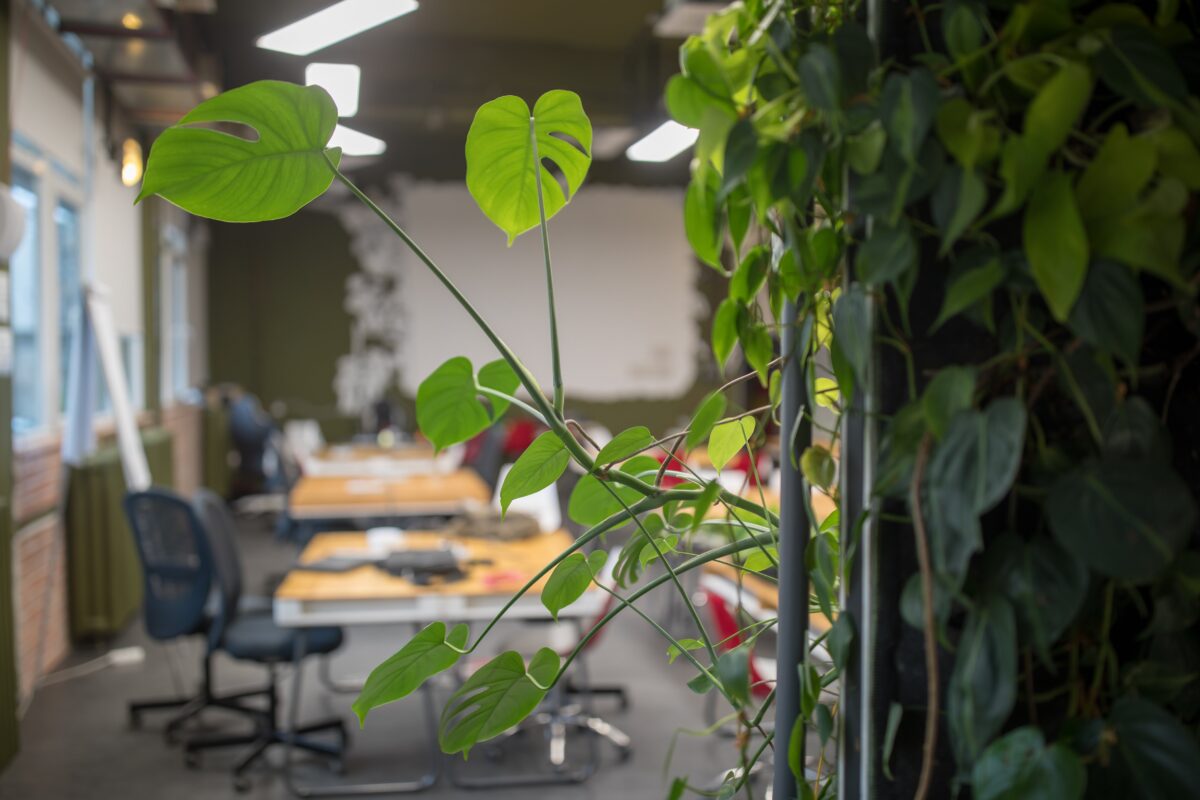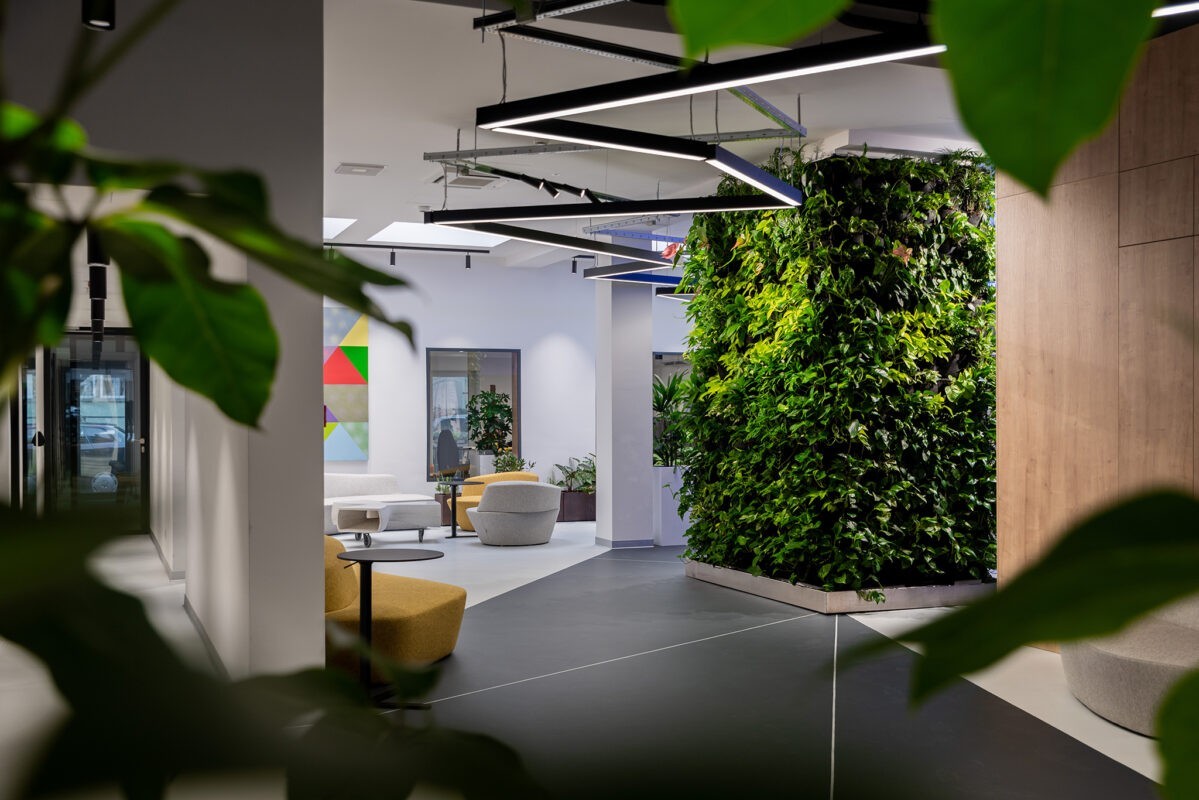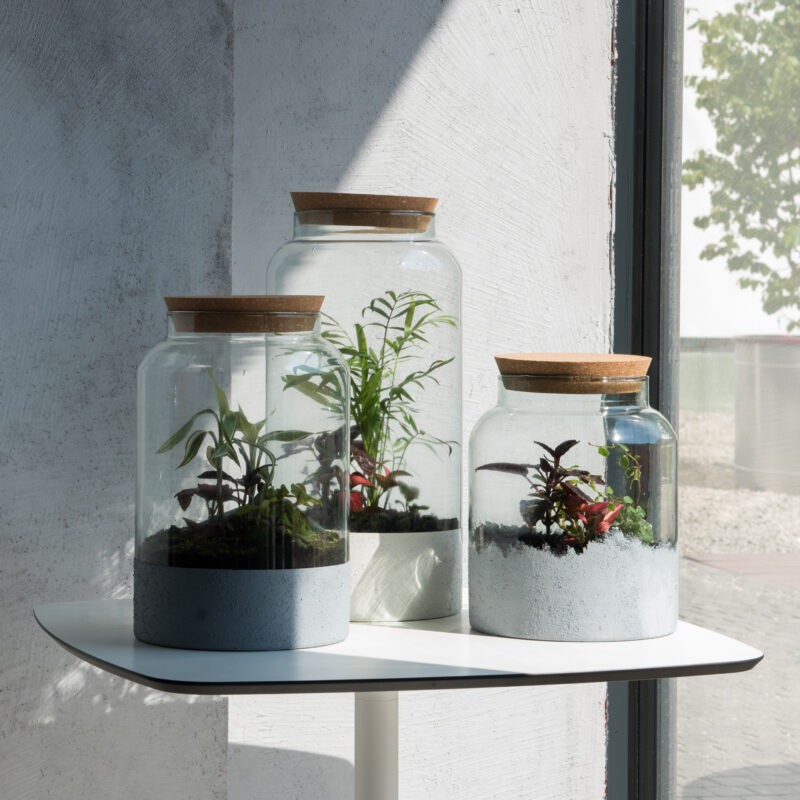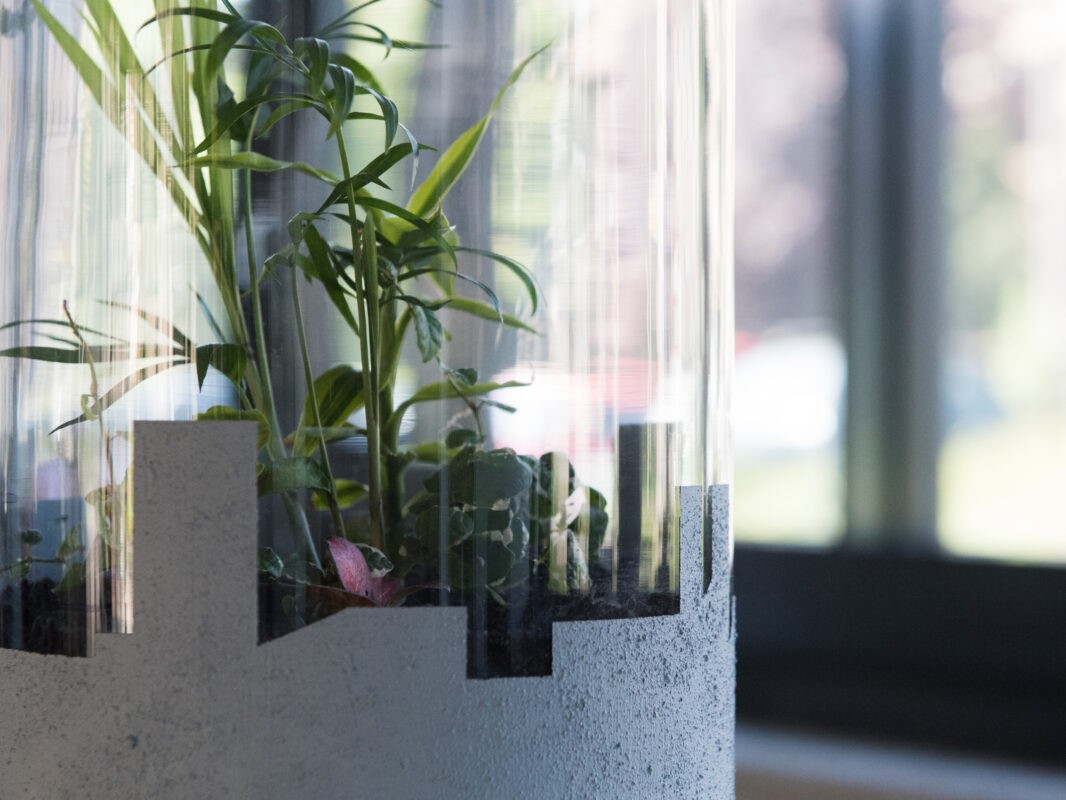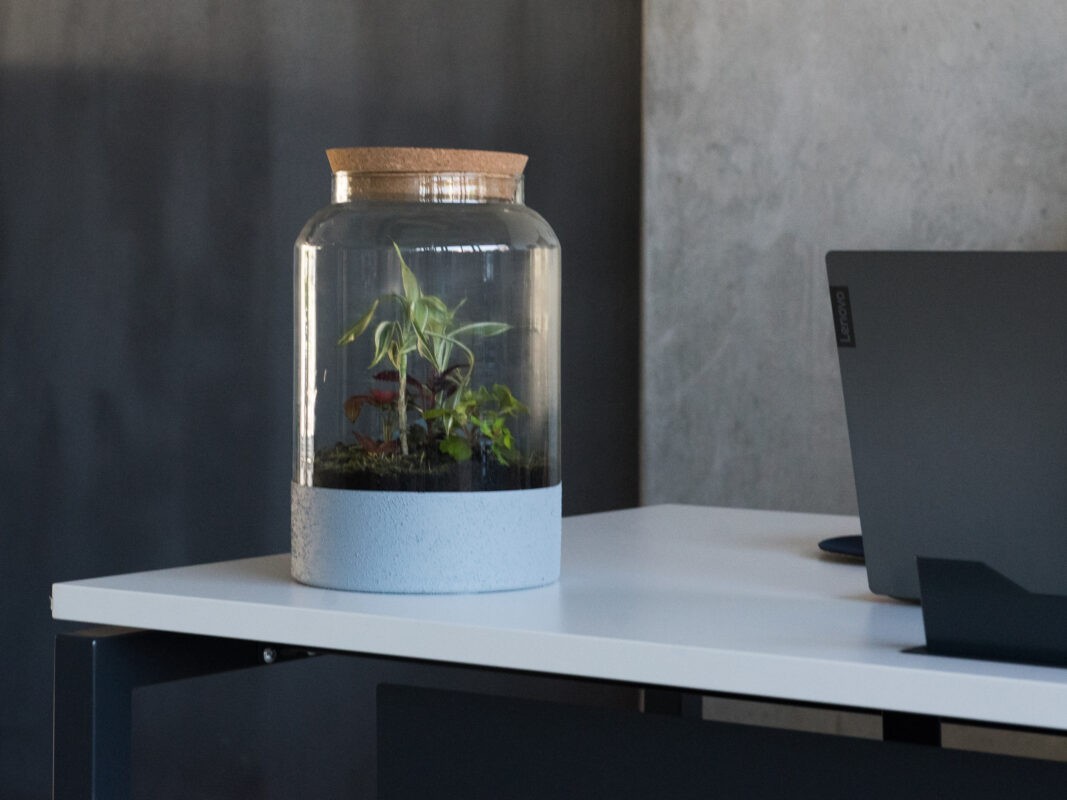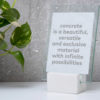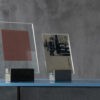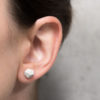collaboration
AB x GROFIE – Plants and concrete – a common mission for liveable cities
When Anita Boldog, the founder and designer of AB Concrete Design, and Tamás Koltai, the founder of Grofie Green Walls met for the first time, they knew right away that they had a common mission. And that is none other than creating livable cities and spaces that serve as habitats for flora and fauna, and also flipping that particular switch in people’s minds to make it clear for everyone what the benefits of bringing nature closer to us are – be it balcony gardening or even turning the entire front of a building green.
Tamás, what was the first thing that grabbed your attention about AB Concrete Design?
We originally contacted Anita about the design and construction of concrete pots, and frankly I didn’t really look up the company, as it was clear from the first impression that the professionalism we demand from ourselves was guaranteed on their end as well. Anita and I realized very quickly that we “speak the same language” and during the first meeting, brainstorming had already commenced.
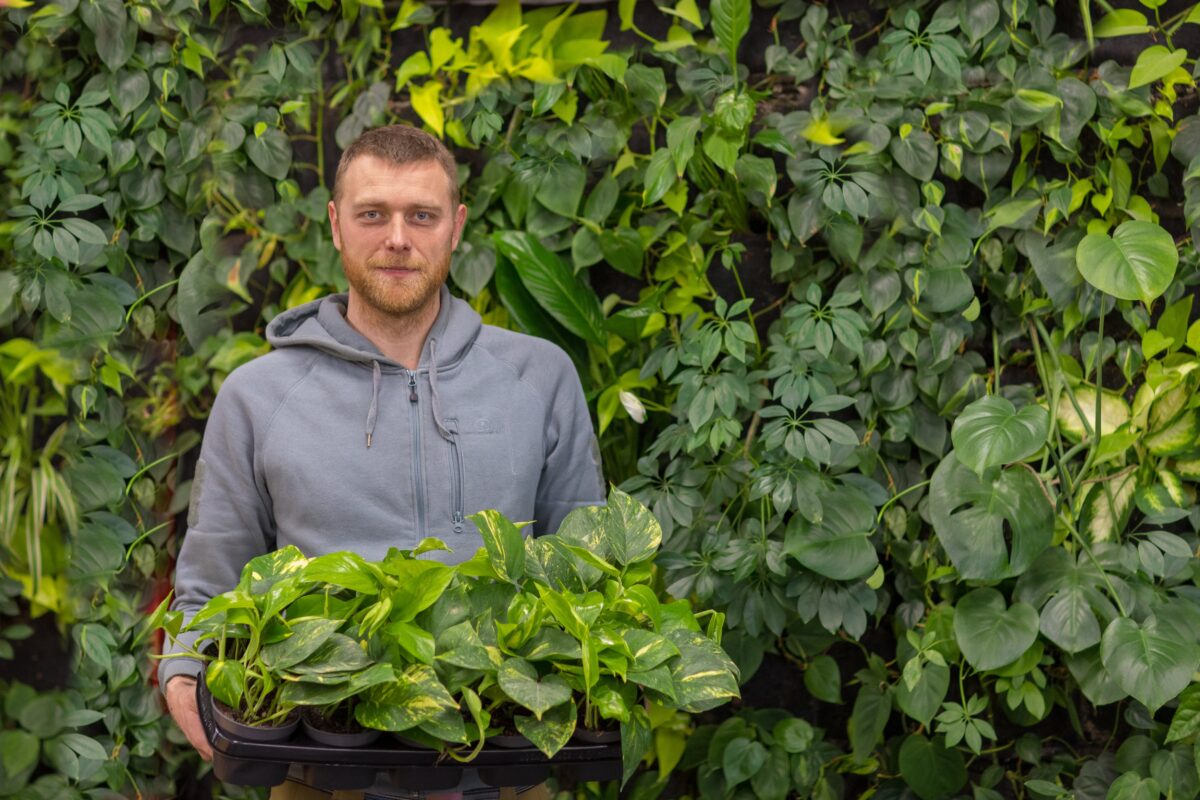
And what does concrete have to do with plants?
Our past experience has shown that they go together wonderfully. For me, it’s important and also extremely inspiring how one can combine seemingly distant disciplines or materials, creating something exciting and new, and going beyond classic uses.
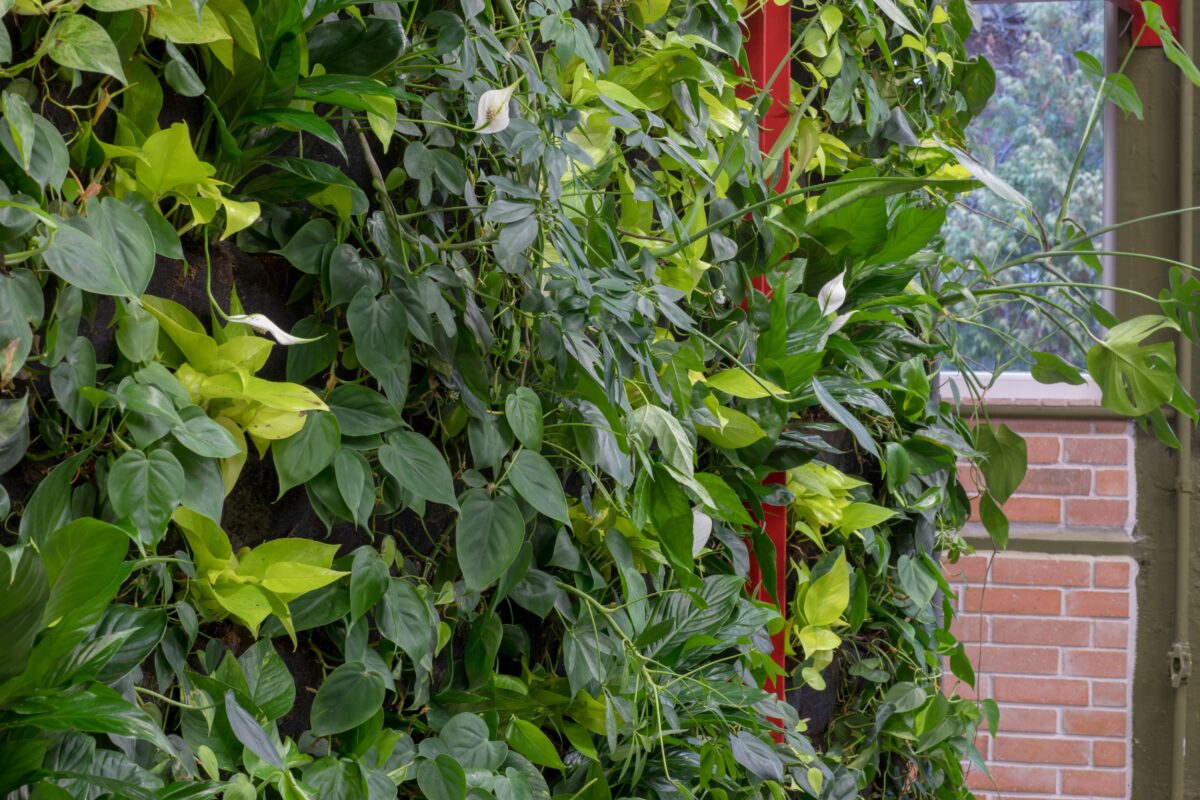


In addition to the above, your undisguised goal is habitat creation. Can you tell us a little bit about that?
Of course. Habitat creation and habitat-friendly architecture in general are of paramount importance to us. After all, how can we bring wildlife closer to humans than by building things without taking away the habitat of birds, small mammals, arthropods and plants that already live there. If this was not the intention of the designers, when, for example, a factory building or any industrial site, office building or residential park was built, it is of course possible to make up for it afterwards. The gardens installed in the enclosed courtyards of apartment buildings or on the roofs of office buildings, bee and insect hotels, burrows built for hedgehogs, bird feeders and green walls all serve this purpose.
Unfortunately, with all this in mind, we still cannot say that habitat creation would be an integral part of the work of architects, for example, although it is a well-known fact how important it would be to integrate this into the processes.

What do you think would be the first step to change this?
Basically, a change of attitude is needed. Professionals need to think about building livable cities from the get-go. Nature-conscious architecture and construction botany are at least as much of a priority as the fact that the needs of people are perfectly met by specific buildings. In short, this – just like the plants – has to be planted in professionals’ minds – from architects to gardeners. This is the only way to flip that particular switch.
Why is Grofie the best choice for professionals who have already recognized the importance of such a paradigm shift?
There is also a detail that many do not think about. Designers are the invisible superheroes to whom we owe our ideas related to planting and habitat creation to be feasible in practice and to be functional as well. We believe that Grofie clearly has a place in such a project, as planting experts we can set up a strategy in a professional way about what the best solution would be.

How does design relate to habitat creation and urban planting?
It is essential to involve a designer in the implementation of our projects related to making cities livable. The basic task of designers is to design objects that, in addition to being functional and aesthetic, fit into our environment in a way that is almost unnoticeable. Most people don’t even realize how many individuals work on designing the objects around us, and that the process doesn’t start with production, but with creative brainstorming, and not only engineers but also designers are be needed to implement ideas. That is exactly why we need the work of Anita Boldog. She is the one who helps translate what we think into the language of design.
You are currently working on a specific project with Anita Boldog to create floating nesting sites for waterfowl on a quarry lake. Anita, please tell us about this!
The request came in connection with my dissertation about floating concrete islands. The task is to design floating islands for birds as a nesting place for a quarry lake, which is partially a nature reserve. I was very happy with the assignment, I didn’t even read the e-mail all the way through before forwarding it to Tamás, and I couldn’t wait to go see the site. Both of our knowledge and expertise were needed to make the final designs. I brought the shapes, my knowledge of materials and way of manufacturing, and Tamás helped formulate the criteria to build the perfect habitat for both the protected plants and the nesting birds. From my standpoint, a biologist and a designer are the perfect match for a task like this.
What makes Grofie Green Walls and AB Concrete Design unique?
In Hungary, the habitat creation segment is practically not represented by anyone but us, and the concept itself can be considered an innovation in real estate development. Numerous studies show that habitats are constantly being destroyed. The good news is that even in an urban setting, there would be plenty of opportunities to protect living things. There is only one solution to this, which I have mentioned before: to change the attitude and approach of professionals and decision-makers. It is important for us to educate people and show them exactly what these opportunities are. As a biologist, I learned early on that humans are not superior to nature. This is something that everyone should accept as a fact, and prioritize when it comes to construction or even just furnishing an office.
What are the specific benefits of the paradigm shift you mentioned?
There are numerous economic and social benefits to planting and nature-conscious construction, and it’s not restricted to creating green spaces for recreational purposes. A piece of real estate, that is in a green environment, has a significantly higher market value, because people, by their very nature, feel much better and prefer to live in places closer to nature. Nor should we forget about making office buildings greener, which we can also accomplish in a myriad of ways, from green walls to planting indoor office spaces to roof gardens. In this case too, it is true that plants will make the work environment more attractive, so that employees will be happy to spend time in the workplace and will generally feel much better, which is a very serious added value for employers.

The initiatives of residential communities are also exciting: remodeling and planting the inner gardens of apartment buildings, creating community gardens in a nearby park, or “just” starting balcony gardening. AB Concrete Design has also involved Grofie Green Walls in a project. We have jointly developed a product that is the latest exciting piece in AB Concrete Design’s corporate gift portfolio.
The joint project mentioned above is a florarium. Please tell us exactly what it is!
Tamás – The florarium, also known as the bottle garden, is a closed ecosystem in which plants grow in a practically self-sustaining way. Because of the design, living conditions created behind the glass are the same as the natural habitats of the plants. The system also has its own water cycle, which means that there is no need for watering.
The joint project of AB Concrete Design and Grofie Green Walls is FLORA, the life enclosed in a bottle. In the florarium, we have found the best fulfillment of our common mission: to create habitat where no one would expect it.
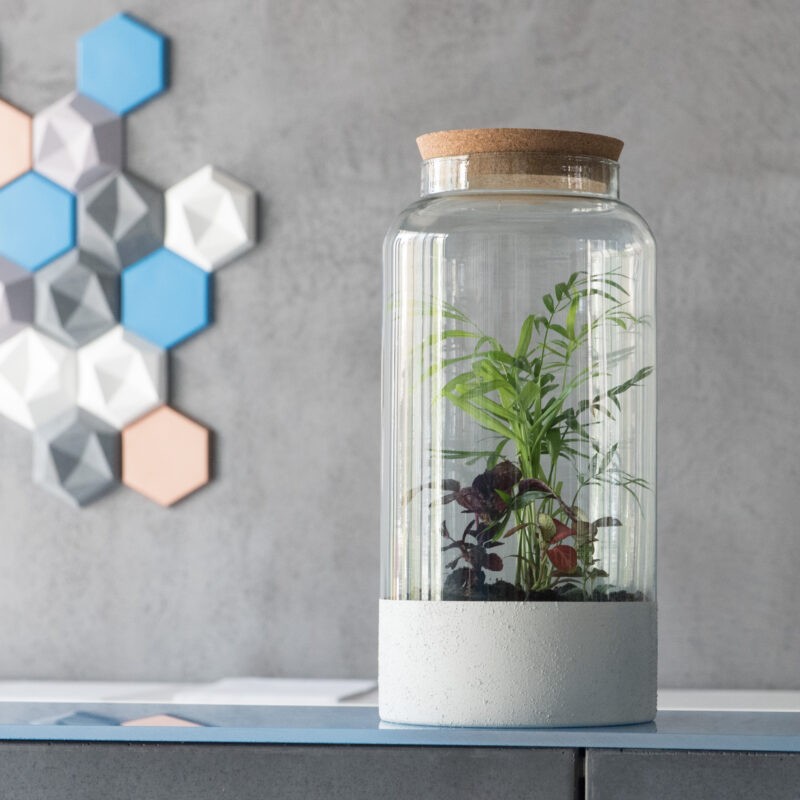
Anita – The main profile of AB Concrete Design is the corporate gifts product line, on which we have already achieved outstanding success. It is also time for a change of attitude in corporate gifting habits, and we are at the forefront of this. More and more companies are contacting us, who are looking for unique, high-quality and domestic designer gifts or trophies. In each case, our designers propose and create solutions and objects, from design throug execution to finished products, which, in addition to fitting into the customer’s image, remain in use on the long run and strengthen the given brand.
I have been meaning to include plants in this product line for a long time, but for lack of expertise, I did not dare to get involved alone. During a joint brainstorming session with Tamás, we came up with the idea of developing a corporate gift version of the florarium – with sophisticated, clean shapes, a super-thin concrete coating on the glass surface, and many solutions to fit FLORA into the image of the ordering company.
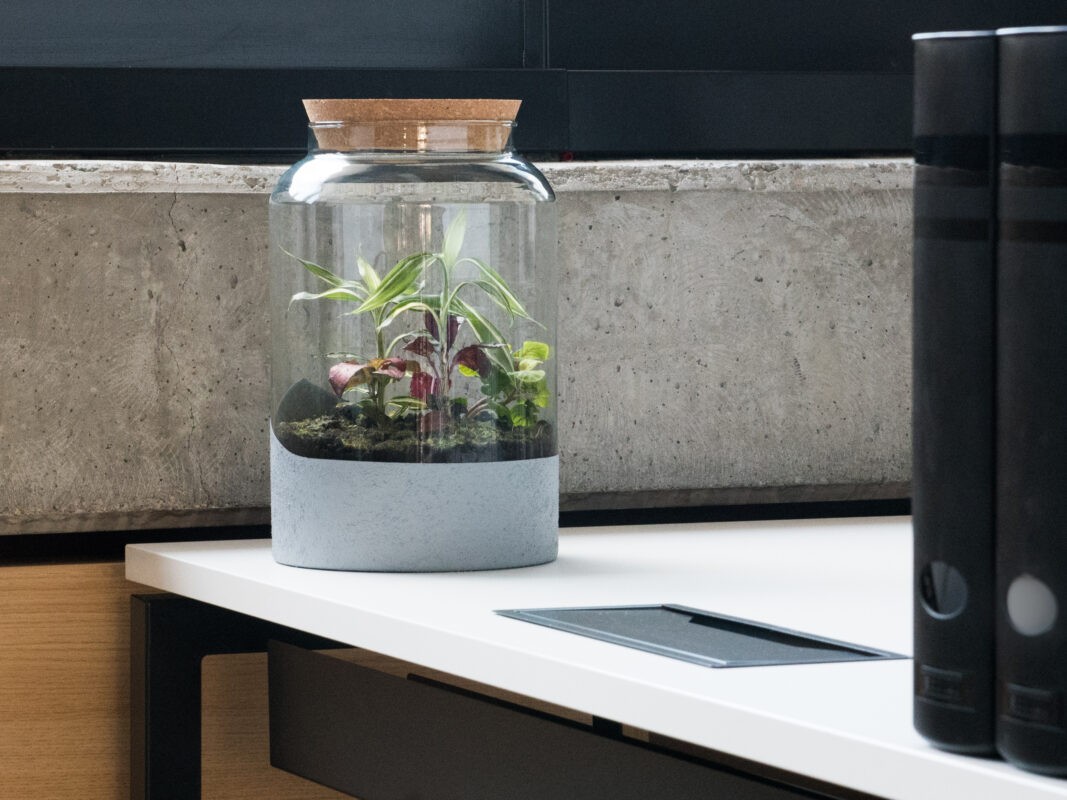
What are your plans for the future?
Even in our joint work at Grofie and with Anita, the idea of pushing the limits of the profession as much as possible has always been in the back of our minds. We’ve already got a taste of classic indoor planting as well as outdoor planting, and we have a lot of exciting plans in this segment. It is our intention to work with the participants and decision-makers of the profession to achieve the great common goal, which is to create livable cities and to make construction nature-conscious. We are convinced that this is possible and are constantly looking for opportunities to reach as many companies as we can, for example from the real estate sector as well.
The population needs a green environment. We are looking for business partners who agree with this statement and want to do something about it. We will lead the way.


